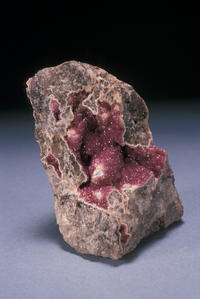For the first time, visitors to the Oxford University Museum of Natural History’s (MNH) website can search digitised MNH collections from a single page (from Zoology through to Mineralogy, Palaeontology and even the Museum's archives). Collections online provides access to more than 48,000 records from the Museum’s collections; many with fantastic images showing objects from a variety of angles. The search results can be filtered dynamically, or specialist advanced searches can be run using scientific terms, and the results can be exported. This access provides a unique insight (particularly for items currently in storage) that can't be gained from a visit in person, and showcases the breadth and beauty of the Museum's collections.

The launch of this new Collections online service, represents around 18 months of work by teams across IT Services and within the Museum of Natural History, and follows years of work uploading MNH data into a Collections Management System. The project saw its share of challenges along the way, including ensuring that URLs are user-friendly and dynamic, so website visitors can bookmark and share content. The MNH team is thrilled to have the collection available online and are continuing to enrich the content, including new or featured collections such as this one about William Smith, so do keep checking back.
So what's next? Work is underway to design and deliver a new collections online website for the History of Science Museum during 2020, and in the coming years both the Ashmolean Museum and Pitt Rivers Museum will also take their turns. Watch this space.
The technical stuff and teamworking
The website was developed by creating a React app which runs within a Mosaic website page, meaning the user journey appears seamless.
The website is powered by Amazon Web Services (AWS) and uses their serverless technology to generate each page by running a series of Lambda functions. Rendering the home page requires approximately 40 Lambda functions to run, each returning a section of the page and each operation taking place potentially in completely separate Amazon infrastructure.
In order to achieve this complex yet elegant hosted environment, Gardens and Museums IT collaborated closely with an external AWS partner with experience in setting up and managing such systems. They became an integral part of the project team, working closely with IT Services Software Solutions to design the code delivery pipeline and disaster recovery planning, among other things. This has resulted in a comprehensive support structure involving a supplier, Gardens and Museums IT and IT Services.
Keep an eye out for future GLAM digital site launches, but in the meantime, we hope you enjoy the MNH Collections online. If you have questions about the project, please contact Marcus Cheetham.